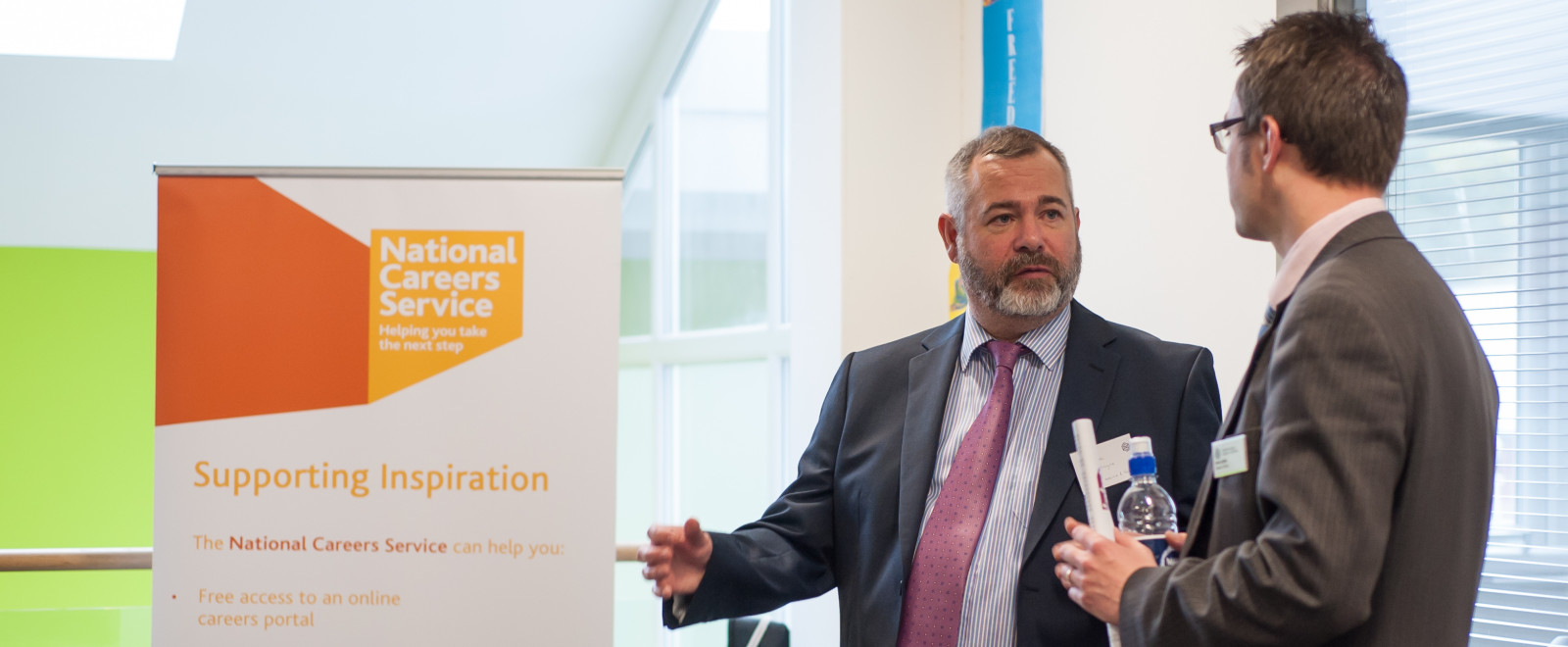Perspectives from the SEND sector
The Link School Sunderland
RON CRUIKSHANKS, DIRECTOR OF SAFEGUARDING AND STRATEGIC CAREERS LEADER
Our school is in Sunderland, a city that suffers from high levels of unemployment and deprivation. We are not a special school, but a lot of our students access Special Educational Needs and Disabilities (SEND) support for mild learning difficulties.

A careers fair in Northumberland
Some have Attention Deficit Hyperactivity Disorder (ADHD), Oppositional Defiant Disorder (ODD) or other diagnoses that affect their ability to function in a mainstream setting. Almost all have some form of Social, Emotional and Mental Health (SEMH) difficulty. Academic ability varies greatly. While we have a degree of stability at key stage 4, key stages 2 and 3 are transient, with some students returning to mainstream education.
When Gatsby’s North East Career Benchmark Pilot launched in 2015, we were one of the first schools to be selected. Prior to this, our approach to career guidance centred mainly around an annual visit by the Connexions Tyne and Wear service, some ad hoc careers work with key stage 4 students and a fairly disjointed approach to post-16 destinations. We welcomed the challenge, but it was quite daunting given the breadth of the Benchmarks, some of which at that time seemed very aspirational.
Some four years later, we have achieved all eight Gatsby Benchmarks. Careers is no longer something that we 'add on' to lessons; it is a thread that runs throughout the school. Staff recognise it as everybody's responsibility.
We now hold the Quality in Careers Standard, and are part of both the North East Ambition Careers Leader Network and our local Careers Hub. Careers provision is an integral part of the school improvement plan and the Strategic Careers Lead is part of our Senior Leadership Team (SLT). We also have excellent relationships with local businesses and training providers, work closely with The Prince’s Trust and have just secured funding to work with Business in the Community. Most importantly, all this activity is having an impact on young people. The proportion of our students Not in Education, Employment or Training (NEET) has dropped from 60 per cent in 2015 to 9 per cent in 2017.
Careers is no longer something that we ‘add on’ to lessons; it is a thread that runs throughout the school. Staff recognise it as everybody’s responsibility.
Ron Cruikshanks, Director of Safeguarding and Strategic Careers Leader
In order to get to where we are, there were some key challenges to address: a culture of despair and lack of ambition regarding post-16 options, particularly among less able students; an inability to deliver meaningful independent careers advice within school; a lack of parental buy-in and poor careers network; a lack of strategic direction and ownership across the school; a lack of understanding of careers and the impact good careers provision can have; and the need to support our transient school population at an earlier age. These challenges were reflected right across the Benchmarks and it was clear that if we didn’t address them, any work we did would be unlikely to be sustainable and worthwhile.
One of our key enablers to addressing these issues was to deliver careers advice in a truthful and realistic way. If our lowest ability student wanted to be a doctor, we would support them while offering realistic alternatives to allow entry into that field from a different direction. We question any suggestion that opportunities don’t exist and demonstrate this to students by linking opportunities to lessons, visits and careers activities.
As part of our continued development in careers delivery, we use the online Compass tool to assess our progress. When we change our delivery approach and open up opportunities to different year groups, we use this tool to record our activity. Understandably our Benchmarks rating fluctuates but we are not put off by this. It takes time to bed in new elements of a programme and we see the Benchmarks as a framework for improvement.
There are lots of resources, mostly free, that represent ‘easy wins’ to link careers to the curriculum. For example, this could be something as simple as a single PowerPoint slide at the start of a lesson, demonstrating how the lesson links to occupations. There are lots of resources out there to support the Gatsby Benchmarks, and I recommend you find out which are available in your area and use them.
To bring together all of our careers activity, and prevent fragmentation, a member of the SLT has strategic oversight – sitting above the day-to-day delivery. With the careers programme being an integral part of the school's improvement plan, the Strategic Careers Lead is in a position to influence school direction and secure resources to make improvements.
For example, we recognised that our school did not have the ability to deliver independent careers advice that complied with both Benchmark 8: Personal Guidance, and our legal obligations. We were able to articulate to the SLT the importance of this activity and secure funding for external support while our Careers Leader gained the necessary qualifications. Although expensive, it has been a worthwhile long-term investment.
It’s important to point out that we do not work in isolation. We use every opportunity to talk to parents, including in all the multi-agency meetings our staff attend, and also through the school text service. This ensures messages get directly to parents that might otherwise be lost. We also carry out a lot of external networking - as a result we now know who and where to go to when we need advice, support or funding.
Building on the firm foundations we have established, I hope to see us continuing our journey towards consistently meeting all of the Benchmarks, reducing our NEET levels and supporting more young people to progress and achieve positive outcomes.